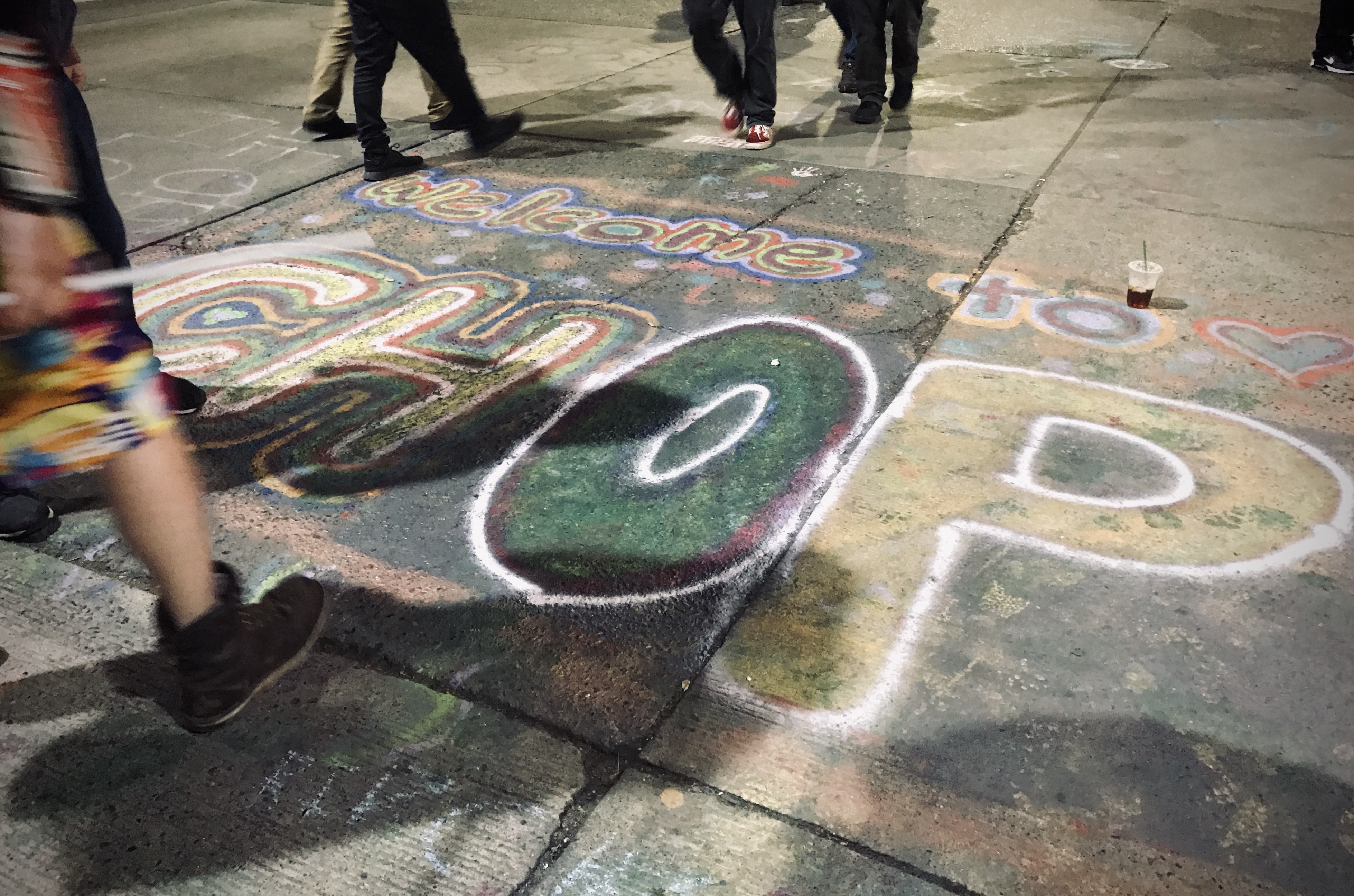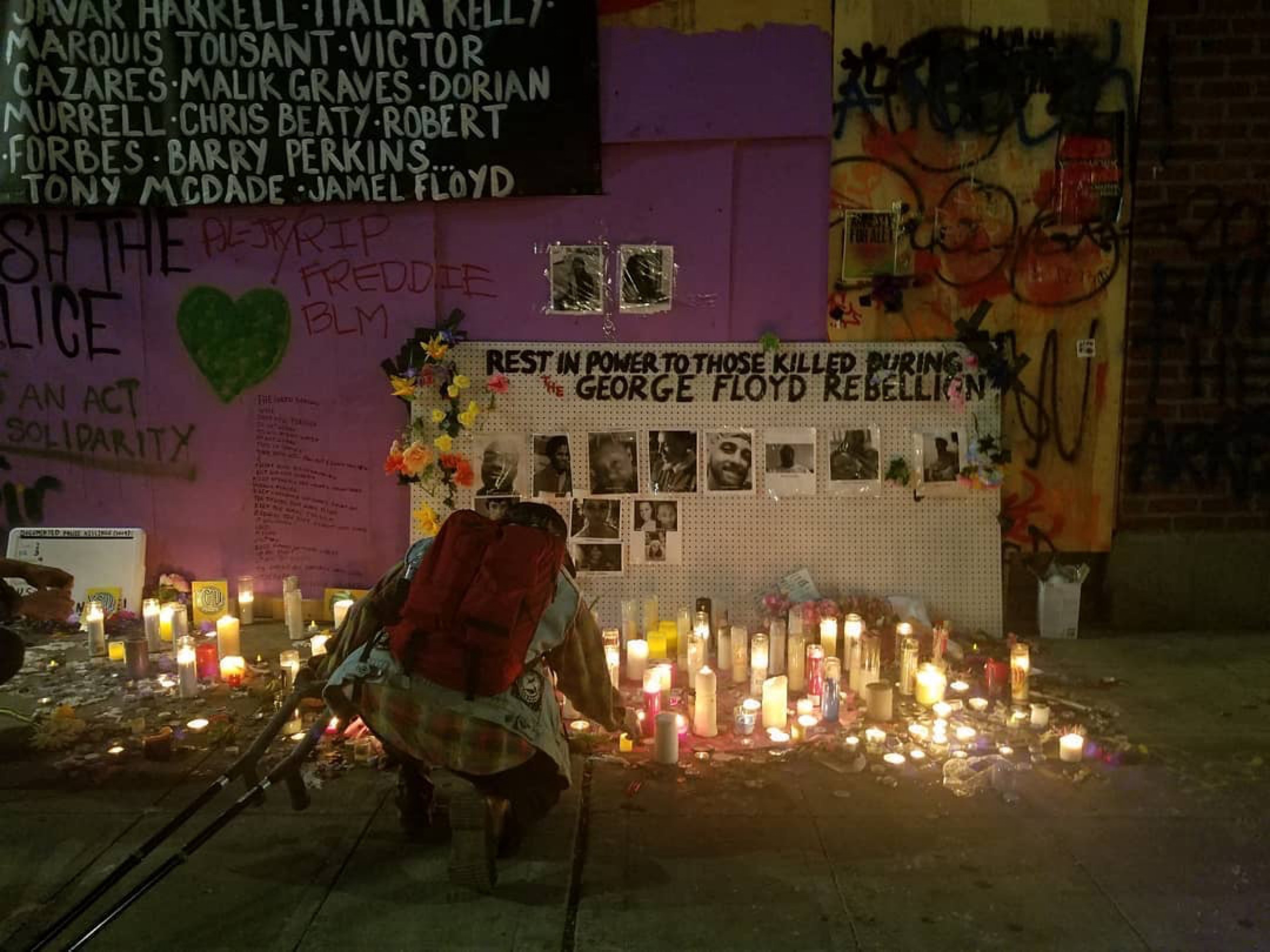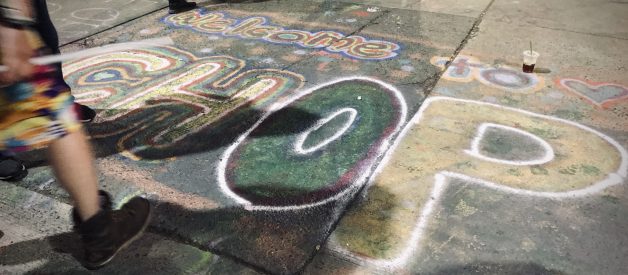People keep asking this question, so here?s some context
 UPDATE: As of 6/13, the area formerly known as the ?Capitol Hill Autonomous Zone? (CHAZ) has been renamed ?Capitol Hill Organized Protest? (CHOP).
UPDATE: As of 6/13, the area formerly known as the ?Capitol Hill Autonomous Zone? (CHAZ) has been renamed ?Capitol Hill Organized Protest? (CHOP).
UPDATE 6/12: I changed the title of this article to make it more family-friendly so people are less shy about sharing it with folks who need it the most.
UPDATE 6/16: I wrote a new post about what I witnessed when I visited the CHOP zone. That post is here.
?What the f*ck is happening in Seattle?? an Oakland friend texted me the other day. I laughed, and then sighed, because in order to do justice to this question is to delve into years of back story. Moments later, I saw a tweet asking the same question, and realized that this is something that a lot of people are curious about right now.
Since a lot of the narratives swirling around about Seattle right now are less-than-insightful, I?m sharing a few points to help contextualize the Capitol Hill Organized Protest in the bigger picture of the dizzying terrain that is Seattle history.
Meanwhile, in the interest of amplifying the work being done by the collective Black voices on the ground, I would like to direct your attention to this document, which explains what is being asked for in the aftermath of what they?re calling the ?George Floyd Rebellion.? Also, Seattle author Ijeoma Oluo?s So You Want to Talk About Race is an important resource that just climbed to the top of the New York Times bestseller list. Finally, while you?re buying Seattle books, check out Black Imagination: Black Voices on Black Futures, curated by local artist Natasha Marin.
1. Seattle = American settler capitalism on steroids
Since its 19th century gold rush beginnings, Seattle has attracted prospectors of all sorts. Their economic prosperity has always come at a price for somone else: on February 7, 1865, the Seattle Board of Trustees passed an ordinance that banned ?indians? from living within city limits, with the exception of those who were employed and housed by white settlers. To this day, the Duwamish?the original inhabitants of what is now Seattle ? do not have federal recognition from the US government. Meanwhile, the city of Seattle is named for a Duwamish Chief, whose face is also used as a city logo.
Subsequent boom-and-bust periods followed, largely driven by rapid growth in high-tech industries. Within a year of the founding of the Boeing company in 1916, the US had entered World War I, and Boeing was fulfilling military contracts. The company?s founder, William Boeing, saw to it that his personal racism would have a lasting impact on the city?s widening economic inequality by authoring bylaws that restricted the sale of real estate in his neighborhood to anyone who wasn?t white. The legacy of racially-restrictive housing covenants in Seattle is a staggering wealth gap: In 2019, the median net worth of a white household in the region was $456,000. For Black households, it was $23,000.
Seattle?s most recent growth cycle, of course, is dominated by Amazon, which surpassed Microsoft in 2019 as the region?s #1 employer, with more than 53,500 local employees, most of which were added over the last decade. While Seattle became the hottest housing market in the country, many African American households were displaced from the Central District, the only neighborhood where they were allowed to own homes for decades. (Read what groups like Africatown and Wa Na Wari are doing to respond to gentrification here and here.)
Meanwhile, Seattle?s homeless rate grew to the third in the nation. There are currently more than 40,000 unhoused children in Washington State. (During the 2016?2017 school year, 1 in 16 children enrolled Seattle Public Schools experienced homelessness, a number that has only grown.) As in many cities, a pernicious myth that Seattle?s massive unhoused population are opportunists who moved to Seattle from elsewhere is unfounded. Another set of very damaging and inaccurate narratives about homelessness in Seattle came from the 2019 propagandistic documentary Seattle Is Dying, which gained national traction due to Sinclair Broadcast?s Group?s acquisition of the local network KOMO.
Seattle?s settler colonialist history, with its deeply entrenched racist economic and social disparities, is an essential component of understanding the impact of the past decade?s rapid growth. In 2018, the Seattle City Council unanimously voted on a tax on large corporations like Amazon to help generate money for affordable housing. Less than a month later, facing a ?well-funded and vicious? referendum campaign, the city council repealed the tax.
This is an important point about Seattle that might get lost to outsiders: From the outside, it?s possible to imagine Seattle as a place where progressive or even far-left policy rules. In reality, Seattle has always been characterized by a struggle between HUGE money interests and a small but dedicated progressive contingent that tries, with the limited resources they have, to challenge them. (Washington famously has the nation?s most regressive tax structure.)
It is this struggle that has set the stage for Seattle?s admirable history of radical activism. Many remember the city?s WTO protests in 1999, but this history runs even deeper. In 1919, Seattle was home to the first 20th century general strike in the US. The Seattle Black Panther Party, founded in 1968, went on to become one of the organization?s longest-running chapters. In 1970, an indigenous-led protest movement occupied Fort Lawton in Seattle?s affluent Magnolia neighborhood. After a violent backlash from police, the protesters were ultimately successful, and their occupation resulted in the establishment of the the Daybreak Star Indian Cultural Center. Their success helped inspire the founding of El Centro de la Raza. It would be remiss not to locate CHOP within the rich context of this activist history.
2. Durkan is a pro-corporate, anti-activist mayor
Amazon?s influence over local politics cannot be overstated. In 2019, Amazon poured millions of dollars into ?Seattle?s Most Expensive Election Ever? in an attempt to buy candidates who will not try to tax them. In 2017, they gave $350,000 ?their largest-ever political contribution at the time?to a group supporting Jenny Durkan for mayor.
If I had to describe Seattle?s mayor in one sentence, it would be this: Before Durkan was mayor, she was a US Attorney who conspired with the SPD and FBI to pay a convicted child molester $90,000 to infiltrate activist circles. In 2013, she explained her rationale: ?It?s not the saints who can bring us the sinners.?
When, in the wake of recent protests, the Seattle Police teargassed an entire neighborhood for a week straight, and shot a protester in the chest with a blastball, severely injuring her, they were doing so on Durkan?s authority.
Multiple members of local government intervened, begging the mayor to de-escalate before the order was made to do so. By the end of the weekend, Councilmembers Kshama Sawant and Teresa Mosqueda had both called on Mayor Durkan to resign, and on June 9, a group of protesters, led by Sawant, marched to City Hall to demand her resignation.)
3. Seattle?s distrust of the police runs deep
Since 2012, the Seattle Department has been under a federal consent decree for excessive use of force. Here?s how King5 described the circumstances leading up to that ruling:
The Department of Justice began investigating SPD in 2011 after community leaders said police were using excessive force particularly on minorities.
One of those instances cited in the decree was the death of John T. Williams, when an officer was caught shouting they would ?beat the f ? ? ? ? Mexican piss? out of a Latino man in custody. Another was an incident where a Seattle police officer punched a 17-year-old black girl in the face.
As US attorney, Jenny Durkan personally investigated the SPD?s uses of force that led to the consent decree, and for this reason, having the consent decree perceived as successful has been one of the cornerstones of her tenure as mayor. Back in May, the city asked a federal judge to terminate the consent decree?a motion that has been withdrawn in light of recent events. Durkan?s recent behavior, however, seems to suggest that she believes the consent decree was successful?at a press conference on June 7, she responded to a question about rebuilding the SPD by claiming that a restructuring had already taken place under the consent decree.
And yet, even under the consent decree, the violent and biased behavior has continued. In 2016, Seattle police shot and killed Che Taylor. The officers responsible got off without charges, and later sued Kshama Sawant for describing the killing as ?murder.? In 2017, Seattle police shot and killed a pregnant mother of four named Charleena Lyles in her home, in front of her children. This incident sparked a new wave of protests and pushback, bringing new attention and energy to defunding and abolitionist movements that were already going on. (During a march for justice for Charleena Lyles, I personally witnessed Seattle Police shooting tear gas and blastballs into a crowd that included babies and elders.)
In 2016, one of these movements, Block the Bunker, helped shut down a plan to build a $150 million police precinct. Another movement, No New Youth Jail, tried, but was ultimately unsuccessful at blocking the construction of a new juvenile detention facility in Capitol Hill, just blocks from what is now the Capitol Hill Autonomous Zone. Stop the Sweeps Seattle, meanwhile, is an organization opposed to the use of police force to remove homeless encampments, destroying the earthly possessions of unhoused Seattleites?including families with children?and leaving them with no place to go. (Durkan?s tenure as mayor has also been marked by an uptick in sweeps, which are opposed by public health practitioners and homeless service providers.)
4. Distrust of police has recently intensified
Just a sampling of the events that have weakened trust in the past two weeks:
- Continuing to use tear gas ? a dangerous and potentially deadly chemical weapon banned in international warfare ? days after falsely promising that tear gas would no longer be used.
- The arrest of Evan Hreha, who had posted a viral video days earlier of a young child who had just been pepper sprayed by Seattle police.
- The excessively violent arrest (livestreamed by many residents at the time) of another protester, who was accused of allegedly tapping a police officer on a bicycle with her car.
- The situation involving Nikolas Fernandez, who barreled down the street in a car on a collision course with protesters, shot a protester, and ran to the police. (It was later revealed that his brother worked at the East Precinct.) Fernandez?s last Instagram post before the incident was a meme minimizing the value of race-based civil rights struggles; while he was in police custody, his Instagram was scrubbed clean.
- Multiple falsehoods that have been asserted by the Seattle police have been credulously and unquestioningly amplified by local networks (such as the Sinclair-owned KOMO). This includes the accusation of protesters throwing ?improvised explosives??(the image they shared was clearly of a broken prayer candle).
- More recently, the accusation was made during a press conference that ?armed guards are requiring IDs for people to walk through the area of the East Precinct and requiring business owners in the area to pay a ?fee? to enter??a false claim that has been debunked by area businesses. The Seattle Times later traced the claim to a comment on a post made by instigators on a right-wing blog. Meanwhile, FOX News and other national outlets have continued to push this blatant falsehood.
- On the night of June 8, after the police retreated from the East Precinct, police could be heard over their scanner warning about ?20 to 30 Proud Boys? making their way to the area, perhaps in an attempt to scare away protesters. It is doubtful whether these Proud Boys existed. The police also warned of a ?credible threat of arson? to the precinct. A widely circulated image of a protester with a gun was taken that night, when protesters had reason to believe that they needed to protect the abandoned precinct from arson, and themselves from roving street gangs. (UPDATE: On June 14, Fox News admitted to digitally manipulating photographs of this protester in their coverage of #CHAZ/CHOP.)
- SPD Chief Carmen Best called the department?s retreat from the intersection an exercise in ?trust and de-escalation.? But the erosion of the city?s trust in its police have only been exacerbated by the department?s handling of recent events. As Lola E. Peters wrote,
Had [Mayor Durkan] and Seattle Police Chief Carmen Best taken early, decisive steps ? including immediately announcing the name of the officer who, on May 30, allegedly pepper sprayed a child and firing him or her on the spot ? without using the amoral language of politispeak to shield themselves, they would have gained a measure of respect. Instead we hear about the importance of protecting those who are fully armored from those wearing T-shirts and sneakers.
5. Nikkita Oliver is the true mayor of our hearts
In 2017, attorney, poet, and activist Nikkita Oliver launched a bid to become mayor of Seattle. While her campaign, running on an anti-gentrification and social justice platform, was ultimately defeated in a crowded primary, her People?s Party captured national attention and helped set the tone of an agenda that continues to shine through in the best aspirations of the events of the past weeks. Oliver is a good person to follow for information about current events. (Another Seattleite to follow is Omari Salisbury, a citizen journalist whose coverage over the past two weeks has been nothing short of heroic.)
On June 3, Oliver visited the mayor and laid out the following demands:
- Defund police
- Reallocate funds to investments in Black and brown communities (community-based health and safety programs, mental health programs)
- Release and do not prosecute protesters
(For the difference between ?defunding? and ?reforming? police, please see this chart developed by the national grassroots organization Critical Resistance.)
An excellent interview with Nikkita Oliver about current events was just published by Vanity Fair.
6. The Capitol Hill Autonomous Zone is, by and large, a supremely peaceful endeavor
I do not say this to delegitimize more confrontational tactics ? Martin Luther King, Jr. called riots the ?language of the unheard.? But organizers have made clear that they wanted to handle the retreat of the police from the area peacefully, and protesters have overwhelmingly respected their wishes.
A shrine honoring George Floyd and other victims of police violence has been constructed on the site. A makeshift outdoor theater, screening documentaries like Ava DuVernay?s 13th, now occupies the corner that was a battlefield for a week. Local activists are sharing food, playing music, and talking about ways to construct a more equitable future. The only thing to fear here is the threat posed by the people coming together for a common cause.
One valid question I have seen come up has to do with the extent to which the CHOP experiment will center BIPOC voices. Unfortunately it is not uncommon for white activists to co-opt movements started by Black and brown organizers, and the avoidance of this dynamic will no doubt pose a continuous challenge. As of this moment, none of the demands of organizers have been met by the city, though the move to defund the police is now on the table in a way that would not have been possible without these protests.
?It?s one thing to take a space, it?s another thing to turn a space into something functional that actually serves the community,? Nikkita Oliver told Vanity Fair. ?You know, Seattle is the second city to have a Black Panther Party, and one of the hallmarks of the Black Panther Party was that they met the needs of the community.?
Whatever happens in the coming days, It is my sincere hope that the guiding principle will be the one that brought Seattle to this inflection point:
BLACK LIVES MATTER ?
 ?Rest in Power to those killed during the George Floyd Rebellion? ? Photo by Vivian Hua.
?Rest in Power to those killed during the George Floyd Rebellion? ? Photo by Vivian Hua.
UPDATE: For more information on what?s happening inside the CHOP, I wrote a more recent post here.


